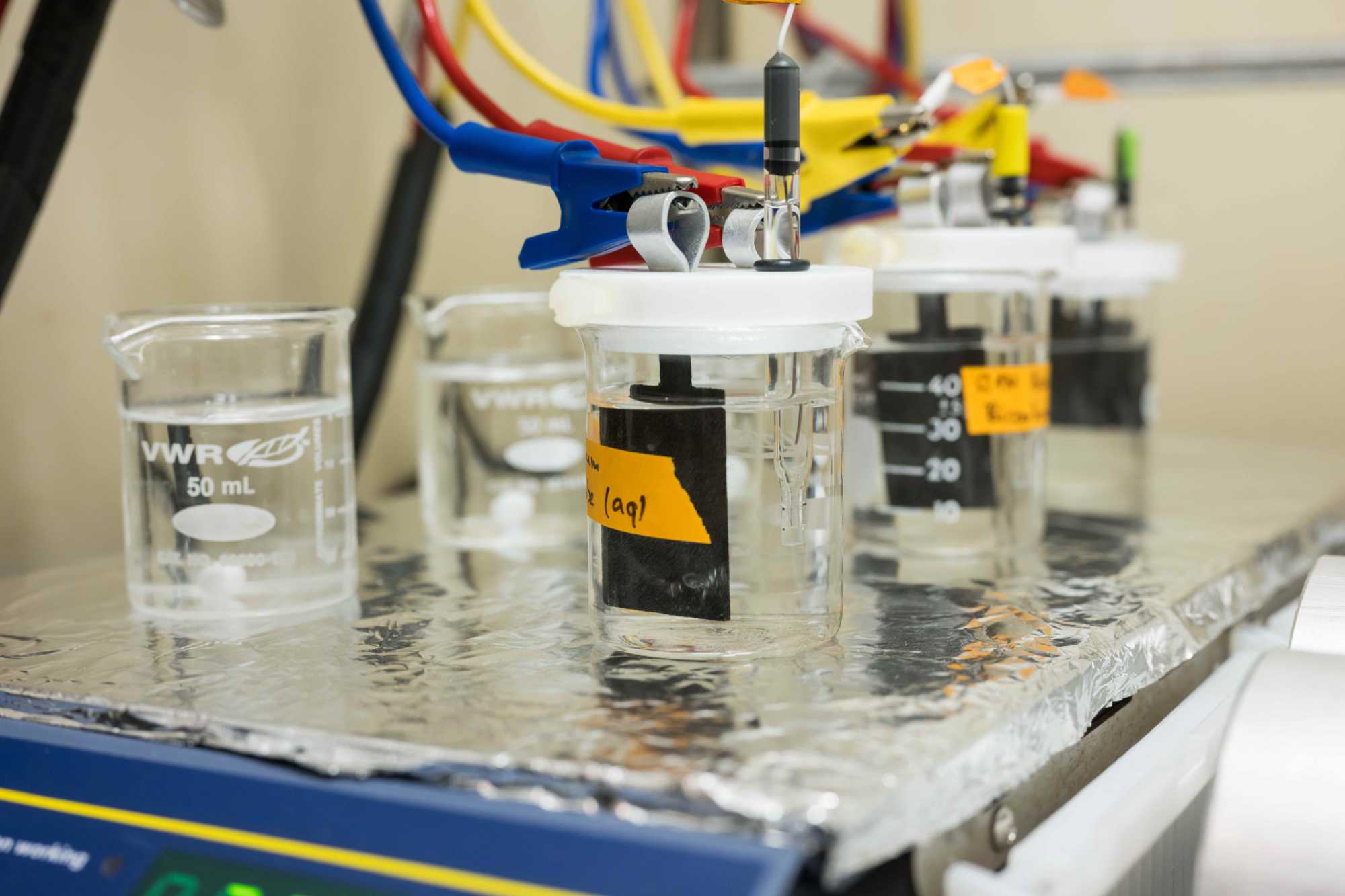A novel approach using laser-made nanomaterials could lay the foundation for globally scalable remediation techniques.
Scientists from the University of Rochester have developed new electrochemical approaches to clean up pollution from “forever chemicals” found in clothing, food packaging, firefighting foams, and a wide array of other products. A new Journal of Catalysis study describes nanocatalysts developed to remediate per- and polyfluoroalkyl substances, known as PFAS.
The researchers, led by assistant professor of chemical engineering Astrid Müller, focused on a specific type of PFAS called Perfluorooctane sulfonate (PFOS), which was once widely used for stain-resistant products but is now banned in much of the world for its harm to human and animal health. PFOS is still widespread and persistent in the environment despite being phased out by US manufacturers in the early 2000s, continuing to show up in water supplies.

Müller and her team of materials science PhD students created the nanocatalysts using her unique combination of expertise in ultrafast lasers, materials science, chemistry, and chemical engineering.
“Using pulsed laser in liquid synthesis, we can control the surface chemistry of these catalysts in ways you cannot do in traditional wet chemistry methods,” says Müller. “You can control the size of the resulting nanoparticles through the light-matter interaction, basically blasting them apart.”
The scientists then adhere the nanoparticles to carbon paper that is hydrophilic, or attracted to water molecules. That provides a cheap substrate with a high surface area. Using lithium hydroxide at high concentrations, they completely defluorinated the PFOS chemicals.

Müller says that for the process to work at a large scale, they will need to treat at least a cubic meter at a time. Crucially, their novel approach uses all nonprecious metals, unlike existing methods that require boron-doped diamond. By their calculations, treating a cubic meter of polluted water using boron-doped diamond would cost $8.5 million; the new method is nearly 100 times cheaper.
Harnessing PFAS chemicals in sustainable ways
In future studies, Müller hopes to understand why lithium hydroxide works so well and whether even less expensive, more abundant materials can be substituted to bring the cost down further. She also wants to apply the method to an array of PFAS chemicals that are still prevalently used but have been linked to health issues ranging from development in babies to kidney cancer.
Müller says that despite their issues, outright banning all PFAS chemicals and substances is not practical because of their usefulness in not only consumer products, but in green technologies as well.

“I would argue that in the end, a lot of decarbonization efforts—from geothermal heat pumps to efficient refrigeration to solar cells—depend on the availability of PFAS,” says Müller. “I believe it’s possible to use PFAS in a circular, sustainable way if we can leverage electrocatalytic solutions to break fluorocarbon bonds and get the fluoride back out safely without putting it into the environment.”
Although commercialization is a long way off, Müller filed a patent with support from URVentures, and foresees it being used at wastewater treatment facilities and by companies to clean up contaminated sites where they used to produce these PFAS chemicals. She also calls it a social justice issue.
“Often in areas with lower income across the globe, there’s more pollution,” says Müller. “An advantage of an electrocatalytic approach is that you can use it in a distributed fashion with a small footprint using electricity from solar panels.”

Q&A with Professor Astrid Müller about forever chemicals
What are forever chemicals?
Müller: “Forever chemicals” are per- and polyfluoroalkyl substances, known as PFAS. These synthetic chemicals are remarkably resistant to heat, water, and oil, making them useful for clothing, food packaging, oil filters, firefighting foams, and a wide array of other products. They are also critical for many low- and zero-carbon technologies such as photovoltaics, green hydrogen, geothermal heat pump fluids, and electric vehicle batteries. Exposure to certain PFAS chemicals has been linked to various health effects, including developmental delays, liver damage, immune system effects, and an increased risk of certain cancers.
Why are PFAS called forever chemicals?
Müller: PFAS are highly stable, and it is difficult to break apart their carbon-fluorine bonds. Due to their pervasive use, they have accumulated in the environment and contaminated water, soil, wildlife, and humans on a global scale, with evidence of their presence even in remote areas like Antarctica. PFAS are toxic even at very low concentrations and are harmful to human health.
How do I avoid forever chemicals?
Müller: People can avoid forever chemicals to some extent by reducing their use of products made with PFAS, including non-stick cookware, waterproof clothing, stain-resistant fabrics, food packaging, and firefighting foam. Contaminated drinking water sources can also be a significant source of exposure. Forever chemicals accumulate in wildlife, plants, and waterways, so efforts to remediate PFAS pollution and limit what is put in the environment are essential for long-term success.

Do water filters remove forever chemicals?
Müller: Not all water filters are capable of removing PFAS effectively. Generally, activated carbon filters, such as those found in pitcher filters and faucet-mounted filters, are not specifically designed to remove PFAS. However, some specialized filters, like reverse osmosis systems, can remove PFAS from water.
Are there ways to get rid of forever chemicals in the body?
Müller: PFAS are highly persistent and remain in the human body for years. Since they do not break down easily, PFAS can accumulate over time. Limiting exposure to sources of PFAS is important. This can include avoiding products that contain PFAS, such as certain non-stick cookware, stain-resistant fabrics, and waterproofing treatments.
What regulations exist regarding PFAS?
Müller: As the understanding of PFAS and their harmful effects continues to evolve, there has been increased awareness of the potential risks associated with PFAS, leading to regulatory actions to limit their use and reduce environmental contamination. Some countries and regions have established guidelines or regulations for PFAS in drinking water and consumer products. In the United States, the Environmental Protection Agency (EPA) has finalized a national, legally enforceable drinking water standard. Some states have implemented their own regulations and guidelines for PFAS testing, monitoring, and remediation in drinking water and the environment. The EPA has also taken steps to regulate PFAS in specific products and applications, such as firefighting foam.






